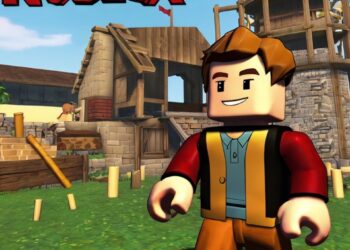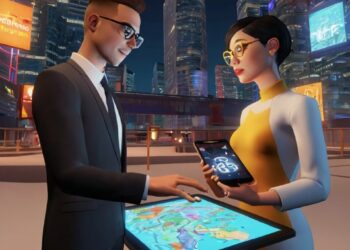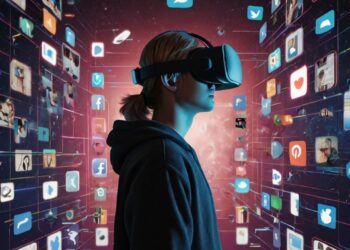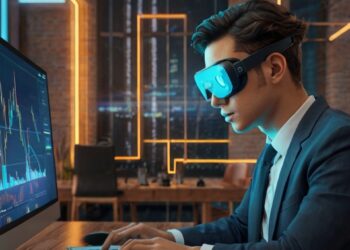At the Mobile World Congress 2024, which took place in Barcelona on Feb. 26–29, experts discussed “the industrial metaverse” in a panel discussion. According to the paper, there is already widespread use of the industrial metaverse, and this trend is expected to continue.
TakeAway Points:
- A panel discussion was held at the Mobile World Congress 2024 on the topic of the industrial metaverse.
- The discussion stated that the consumer metaverse evolved to the industrial metaverse.
- The panel viewed two uses cases of the industrial metaverse; industrial design and training AI.
The Metaverse: a Definition
The industrial metaverse evolved from the consumer metaverse. It has the power to completely change the manufacturing sector, but its development must incorporate cooperation, technology, and interoperability.
Anissa Bellini, head of strategy for the manufacturing industries at Dassault Systèmes, described the industrial metaverse as a “virtual personal universe” as it is the meeting point between a visual representation of something real and a physical object.
“Imagine your things in the virtual environment so that you can improve the real world. As well as imagining, innovating, testing and simulating, the industrial metaverse also enables collaboration and sharing knowledge and know-how within this environment. It’s virtual but it needs to be connected to the real world.”
she said.
On the other hand, Jane Rygaard, head of corporate partnerships at Nokia, opined that she observes the entire industry cooperating to bring about the industrial metaverse.
“It’s how do we have a digital representation of the physical world, but at the same time, how are we able to impact back in the physical world,” she inputs. “It is not enough just to have the image, there has to be an action coming out of it into the real world again. We have to consider how people fit in too.”
Ingrid Cotorus leads technology engineering for devices at Meta, was able to provide an insider’s view of the metaverse.
“If we think about the metaverse, it’s just the natural evolution of how we’re all going to connect to the next internet. It’s the natural evolution of the consumer metaverse. It is a place of collaboration, education and training. It defies distance and time barriers. It’s a place where you get to data faster, you get to solution faster.”
Cotorus stated.
Furthermore, Soma Velayatham, global business development lead at Nvidia, made a clear distinction between digital twins, simulation, and the metaverse.
“Simulation is probably a subset of the metaverse but digital twins and metaverse is a much larger picture. It is fully physical, so fidelity is important. It has to represent exactly what the real world represents. It has to be real-time and be able to synchronize with the physical world. This is our idea of what the metaverse should be.”
Industrial Metaverse Use Cases
Meanwhile, the panel also decided to highlight use cases for the industrial metaverse. Velayatham identified two major examples: industrial design and training AI.
“When somebody is trying to design in the metaverse, you remove a lot of waste, compared with physical design, like car manufacturing industrial lines. By doing it with physical fidelity, you’re able to remove a lot of that waste. The second one we see is because the metaverse represents the physical world, AI can train within the metaverse and safe training time.”
Velayatham added.
Cotorus added that another interesting industrial use case for the metaverse is training and education. He said that they are working closely with the California Fire Department to carry out training on VR headsets for high risk situations.
“You get to have that training in a safe environment but go through the motions and understand what needs to happen, and how you need to react. We like to think that with that not only do we bring efficiency in the training space, but we also save lives.”
She added.
According to Bellini, Dassault is looking to build personalized digital twins of organs to improve surgical outcomes.
“We started to model the human heart in 3D 10 years ago. Today we can also model how it will behave,” she said. “We can create a unique virtual twin of an individual heart, understand what type of disease it has and how to treat it with surgery or predict how it will progress over time.”
Rygaard gave Nokia’s perspective on how these solutions are developed and what supporting technology they need but also stressed the importance of industry insight.
“We need a whole stack of technology — computing, AI, networking and security, for example. Can one company do all of it? We also need the knowledge of the industries that will use it. It doesn’t help us train firefighters if we don’t know what it means to be a firefighter. It doesn’t help with manufacturing without seeing a factory,”
she said.
In addition, Ryaard pointed out that partnership is essential in building the industrial metaverse. “We have to make sure that we draw on the strengths that we have between us, from both a technology point of view and from a knowledge point of view. But we need to think about where it’s going to be used in the end because otherwise, we’re here at Mobile World Congress preaching to ourselves saying we’ll make technology for the sake of technology.” she added.
Furthermore, collaborations in the metaverse sector have grown significantly in popularity recently. Businesses are entering the metaverse realm to develop, control, and expand it in order to increase productivity and engagement.
















